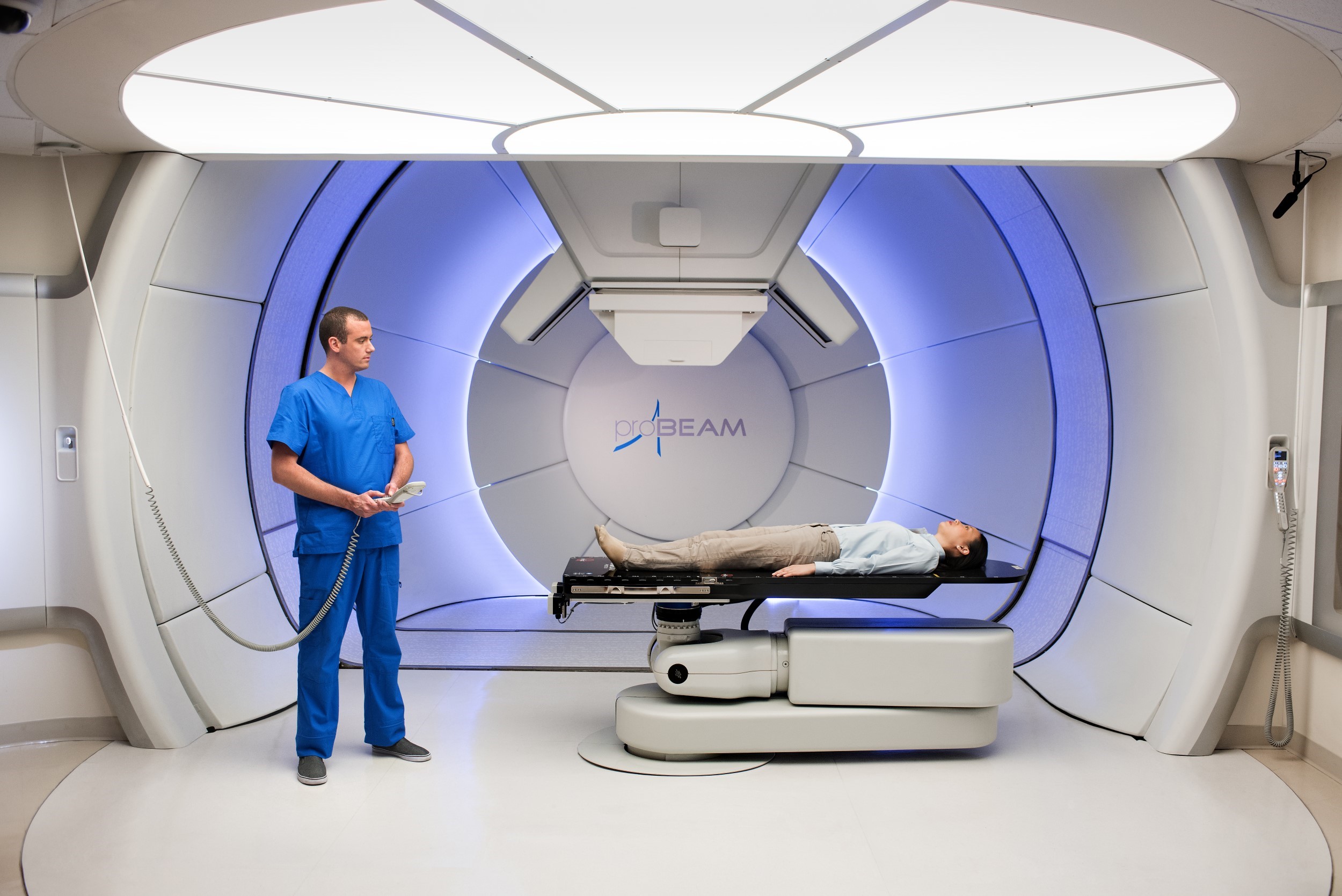Proton-beam therapy
Clinical use of proton beam therapy is steadily growing
Proton beam therapy (PBT1) is a type of radiation therapy that utilizes protons to treat disease, and in particular cancers. The use of protons has demonstrated important therapeutic advantages compared to conventional radiation with photons Image-guided Radiation Therapy (IGRT).
PBT was introduced clinically around 1990 and since then the number of proton accelerators has continued to grow mainly in North America and Europe.
The primary treatment groups for PBT were initially children and adolescents, where the beneficial effects of proton radiation were particularly valuable in terms of a reduced risk of long-term complications, and mainly patients with head and neck cancers.
Since its introduction, PBT has increasingly demonstrated advantageous qualities and with increasing capacity, PBT is today an option for more patients and cancer types.
The properties of proton radiation
Protons have a more focused energy deposition than photons. This is an advantage in the sense that it facilitates hitting the tumor with a higher radiation dose and at the same time reduce the radiation damage caused to the surrounding healthy tissue.
The energy deposition of the proton beam is described as the Bragg peak. The big advantage of the energy deposition compared to photons, is that the radiation energy is very low both at the surface where the beam enters into the patient and where the beam exits the patient. The majority of the radiation energy is deposited in the Bragg peak and the position of this radiation energy peak can be controlled with the energy of the beam.
The aim with PBT is to position the Bragg peak precisely in the tumor and scan it around to cover its entire volume and spar radiation side effects on healthy tissue.
Due to the properties of proton therapy, directing the radiation beam to the target with high precision is essential for the therapeutic effect.
The importance of precision in PBT
All PBT is delivered with image guidance. Due to the size of the particle gantries, the distance between the x-ray imaging source and the detector is however much larger than for standard photon based IGRT. This has a negative impact on the image quality and can challenge the precision of the main energy deposition and thereby the efficacy of the treatment.
At the same time, treatment precision is even more important in PBT than in standard photon radiation therapy due to the concentration of radiation energy in the Bragg peak, which must be positioned with high accuracy in the tumor to effectively kill the cancer cells.
Like in standard IGRT, fiducial markers can be used in PBT to act as surrogate markers for the tumor target to increase target visibility. The use of fiducial markers has however, so far been limited in PBT due to the high relative stopping power of metal on the proton beam, which potentially limits the accuracy and efficacy of the treatment.

Image courtesy of Varian Medical Systems, Inc. All rights reserved.
FLASH technology
A recent development in PBT is the investigation of a radiation dose delivery method called the FLASH2,3 method. FLASH increases the dose rate of the delivery system, thereby facilitating an extremely high and fast radiation delivery. With FLASH, the total dose is delivered in one fraction within seconds. Studies suggest such radiation delivery to have beneficial therapeutic effect in the form of less healthy tissue damage while maintaining the anti-tumor effect.
The advantages of the FLASH method include:
- Potential to protect healthy tissue with no compromising impact on the effect on tumor cells
- Less sensitivity to intra fractional organ movements due to the ultrafast dose delivery
- No risk of inter fractional movements, since the total dose is delivered in one fraction
The concept of FLASH makes it essential to hit the target area with high precision, considering that there is only one dose delivery. If the target is missed, there is no second chance.
Fiducial markers can hence facilitate FLASH by ensuring precise delivery to target. On the other hand, the delivery of the full radiation dose in one fraction makes it essential to avoid dose perturbation, i.e. an unintended reduction of the absorbed dose due to metallic shadowing.
BioXmark® is non-metallic and has low dose perturbation, making it compatible with PBT.
References
1. Journal of the ICRU, ICRU Report no. 78, Prescribing, Recording and Reporting Proton-Beam Therapy.
2. Bourhis J, Montay-Gruel P, Gonçalves Jorge P, Bailat C, Petit B, Ollivier J, Jeanneret-Sozzi W, Ozsahin M, Bochud F, Moeckli R, Germond JF, Vozenin MC, Clinical translation of FLASH radiotherapy: Why and how?, Radiother Oncol. 2019 Oct;139:11-17.
3. Bourhis J, Sozzi WJ, Jorge PG, Gaide O, Bailat C, Duclos F, Patin D, Ozsahin M, Bochud F, Germond JF, Moeckli R, Vozenin MC., Treatment of a first patient with FLASH-radiotherapy., Radiother Oncol. 2019 Oct;139:18-22.